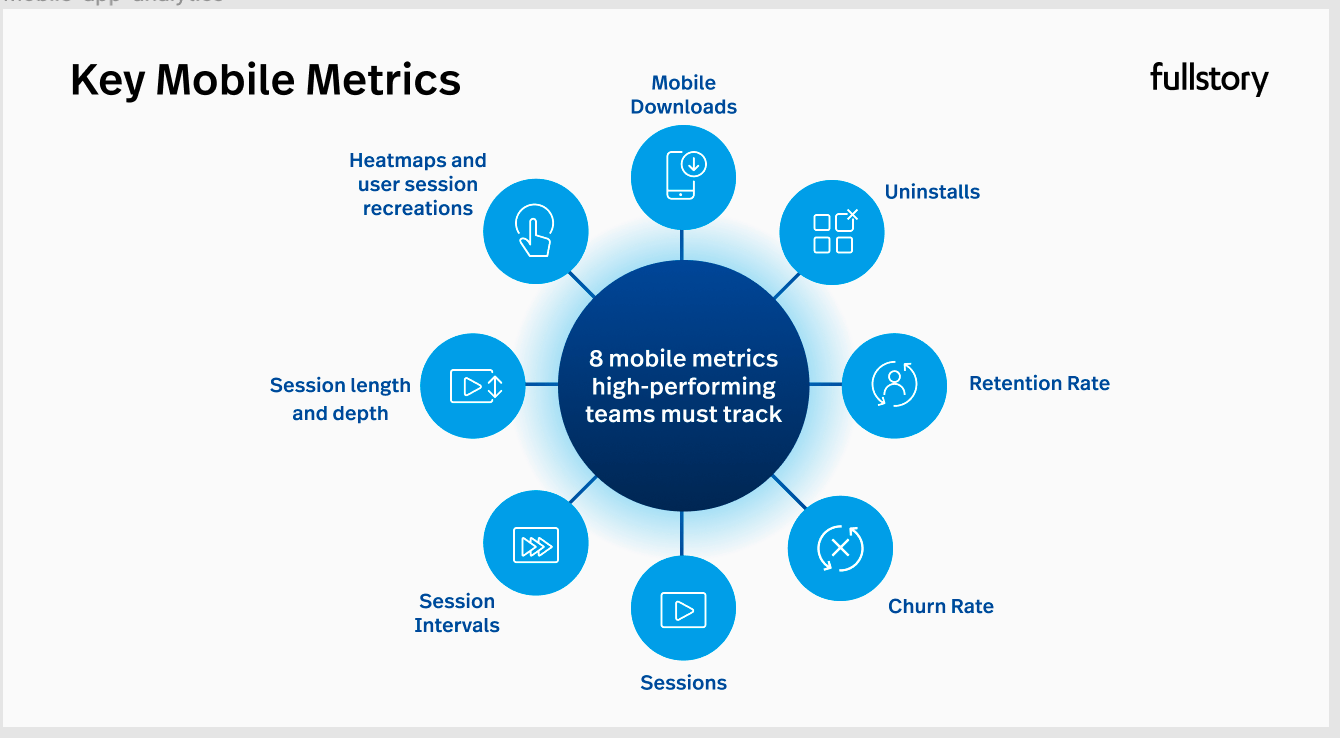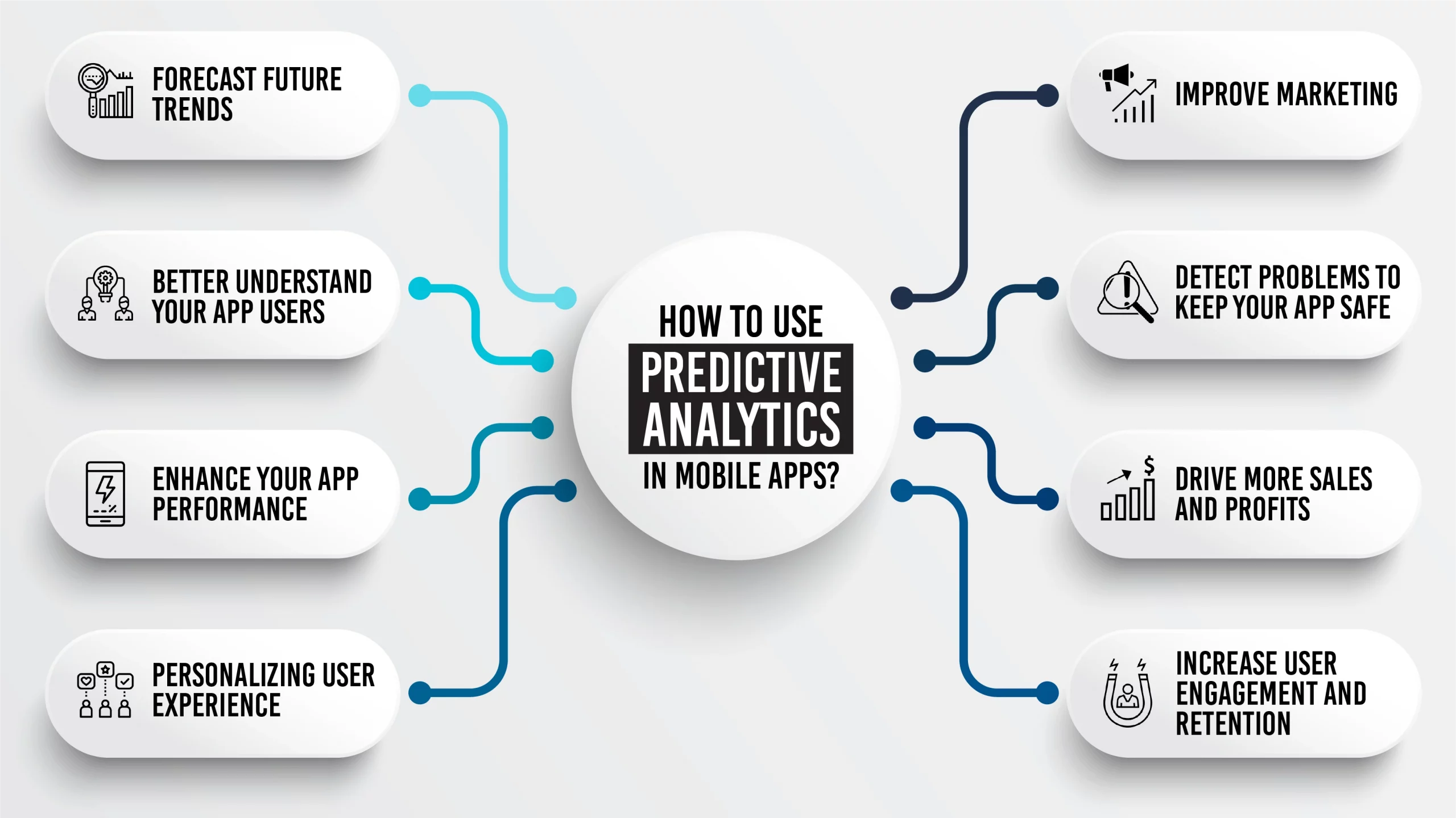SHARE

Mobile analytics has become a crucial component of marketing strategies in today’s digital world. With the rapid growth of smartphone usage, businesses are increasingly relying on mobile analytics to gain insights into consumer behaviour and make data-driven marketing decisions.

(Source: https://decode.agency/article/mobile-app-analytics-guide/)
Understanding the Importance of Mobile Analytics in 2024
Mobile analytics is vital in helping businesses understand the ever-evolving mobile landscape. It provides valuable data on user engagement, app performance, and conversion rates, enabling marketers to tailor their strategies to meet the needs and preferences of their target audience. With the rapid growth of mobile devices and the increasing reliance on them for various activities, mobile analytics has become an indispensable tool for businesses. It allows them to understand how users interact with their mobile apps, websites, and advertisements. By analysing this data, companies can make informed decisions and optimise their mobile marketing efforts. One of the key benefits of mobile analytics is its ability to track user engagement. It provides detailed information on how users interact with mobile apps, such as the number of sessions, time spent on each session, and the actions performed. This data helps marketers understand user behaviour and preferences, allowing them to improve the user experience and increase user retention.
The Role of Mobile Analytics in Marketing
Mobile analytics serves as a compass for marketers, guiding them in identifying the most effective channels, platforms, and messaging to reach their audience. By analysing app usage, click-through rates, and user demographics, companies can adjust their marketing efforts to maximise their return on investment. For example, mobile analytics can provide insights into which marketing channels drive the most app downloads or conversions. It can also reveal the demographics of the most engaged users, allowing marketers to tailor their messaging and targeting strategies accordingly. By leveraging these insights, businesses can optimise their marketing campaigns and allocate resources effectively. Moreover, mobile analytics can help marketers understand the impact of their marketing efforts on user behaviour. By tracking user interactions and conversions, businesses can measure the effectiveness of different campaigns and make data-driven decisions. This allows them to refine their strategies, improve their ROI, and drive business growth.
Predicted Trends in Mobile Analytics for 2024
Looking ahead, the future of mobile analytics promises exciting advancements. Machine learning algorithms will become more sophisticated, enabling marketers to uncover hidden patterns and insights from vast amounts of data. Real-time analytics will also gain prominence, allowing businesses to react quickly to changing consumer behaviours. Machine learning algorithms are revolutionising the field of mobile analytics. They can analyse large datasets and identify correlations and trends humans may miss. By leveraging these algorithms, marketers can gain deeper insights into user behaviour, preferences, and purchasing patterns. This, in turn, enables them to create more personalised and targeted marketing campaigns.
Real-time analytics is another trend set to shape the future of mobile analytics. With the increasing availability of high-speed internet and advancements in data processing technologies, businesses can now access and analyse data in real-time. This allows them to monitor user interactions, track campaign performance, and adjust their marketing strategies immediately. Real-time analytics empowers businesses to be agile and responsive, ensuring they stay ahead of the competition in the dynamic mobile landscape. Mobile analytics is crucial for businesses in the ever-evolving mobile landscape. It provides valuable insights into user behaviour, app performance, and marketing effectiveness. By leveraging these insights, businesses can optimise their strategies, improve their ROI, and stay ahead of the competition. With the predicted advancements in machine learning and real-time analytics, the future of mobile analytics looks promising and exciting.
Getting Started with Mobile Analytics
Embarking on the mobile analytics journey may seem daunting, but using the right tools and strategies can be a game-changer for your marketing efforts. Mobile analytics is a powerful tool allowing businesses to gain insights into customers’ behaviour and preferences. Businesses can make informed decisions to improve user experience, optimise marketing campaigns, and drive growth by analysing data collected from mobile apps or websites.
Choosing the Right Mobile Analytics Tools
The first step is to select the right mobile analytics tools for your business needs. Plenty of options are available, ranging from free basic analytics platforms to comprehensive paid solutions. Consider factors like ease of use, customisation capabilities, and integration options before deciding. One popular mobile analytics tool is Google Analytics. It offers a wide range of features and is known for its user-friendly interface. You can track user engagement, conversion rates, and app performance metrics with Google Analytics. Another option is Mixpanel, which specialises in event tracking and user segmentation. Mixpanel lets you analyse user behaviour in real-time and create personalised customer experiences. Choosing a mobile analytics tool that aligns with your business goals and provides the insights you need to make data-driven decisions is important.
Setting Up Your Mobile Analytics
Once you have chosen your analytics tools, it’s time to set up your mobile analytics infrastructure. This involves implementing tracking codes or software development kits (SDKs) into your mobile apps or website. You can collect valuable data on user interactions and behaviour by doing so. Implementing tracking codes or SDKs may require technical expertise, but most analytics tools provide detailed documentation and support to guide you through the process. Ensuring that the tracking codes are correctly placed is crucial to accurately capture the desired data.
Once your mobile analytics is set up, you can start collecting data on various metrics, such as user demographics, app usage, and conversion rates. This data will serve as the foundation for your analysis and decision-making process. Remember that mobile analytics is an ongoing process. It’s not enough to set it up once and forget about it. Regularly reviewing and analysing the data will help you uncover valuable insights and identify areas for improvement. Starting with mobile analytics requires carefully considering the right tools and proper setup. By investing time and effort into mobile analytics, businesses can gain a competitive edge and drive success in the ever-evolving mobile landscape.

(Source: https://www.fullstory.com/mobile-analytics/)
Interpreting Mobile Analytics Data
Collecting data is one thing, but extracting actionable insights is another. Understanding how to interpret mobile analytics data is essential for making informed marketing decisions.
Key Metrics to Monitor in Mobile Analytics
When analysing mobile analytics, several key metrics deserve your attention. These include app downloads, session length, conversion, and user retention rates. Keeping a close eye on these metrics will help you gauge your campaigns’ success and identify improvement areas.
Making Sense of the Data: What to Look For
While data can be overwhelming, it holds the key to unlocking valuable insights. Look for patterns, trends, and anomalies that could indicate opportunities for optimisation. For example, if you notice a drop in app usage during a specific period, you could investigate if a marketing campaign was ineffective or if there were technical issues.
Using Mobile Analytics to Inform Marketing Decisions
Mobile analytics should not exist in a silo; it needs to be integrated into your overall marketing strategy to maximise its impact.
Tailoring Your Marketing Strategy Based on Analytics
By analysing mobile analytics data, you can better understand your target audience’s preferences, behaviours, and purchasing patterns. With these insights, you can adapt your marketing messages and outreach efforts to resonate with your audience and increase conversions.
Avoiding Common Pitfalls in Mobile Analytics Interpretation
It’s essential to approach mobile analytics with a critical mindset and avoid common pitfalls. As tempting as it may be to focus solely on vanity metrics like app downloads, remember that they might not provide a complete picture of your marketing efforts. Instead, consider the context and the overall customer journey to draw accurate conclusions.

(Source: https://ripenapps.com/blog/predictive-analytics-for-mobile-apps/)
The Future of Mobile Analytics in Marketing
Mobile analytics continuously evolves, and staying ahead of the curve is crucial to success.
How Mobile Analytics Will Shape Marketing in 2024 and Beyond
Looking forward to 2024 and beyond, mobile analytics will continue revolutionising businesses’ operations. Advances in technology, such as augmented reality and AI-powered personalisation, will provide marketers with unparalleled opportunities to connect with consumers on a deeper level.
Staying Ahead of the Curve: Continuous Learning in Mobile Analytics
To leverage the full potential of mobile analytics, marketers must prioritise continuous learning. Stay current with the latest trends, attend industry conferences, and invest in professional development. By doing so, you can ensure that your marketing strategies remain effective and drive results in the ever-changing mobile landscape. With the power of mobile analytics, you can make informed marketing decisions that propel your business forward. Embrace the data, harness its insights, and watch your marketing efforts yield higher engagement, increased conversions, and a stronger connection with your audience in 2024 and beyond.
Frequently Asked Questions About How to Use Mobile Analytics for Better Marketing
What Is Mobile Analytics, And Why Is It Important For Marketing in 2024?
Mobile analytics involves tracking and analysing user interactions on mobile apps and websites to understand behaviour, preferences, and trends. It’s crucial for tailoring marketing strategies, enhancing user experience, and improving engagement and conversions in the increasingly mobile-centric world of 2024.
How Can Marketers Use Mobile Analytics To Make Better Decisions?
Marketers can leverage mobile analytics to identify high-performing content and features, understand user journeys, segment audiences for personalised marketing, optimise app performance, and measure the effectiveness of marketing campaigns to allocate resources more efficiently.
What Are the Key Metrics To Track in Mobile Analytics For Marketing Success?
Essential metrics include user engagement (session length, frequency of use), conversion rates, retention rates, app performance metrics (load times, crash rates), and ROI of marketing campaigns.
What Tools and Technologies Are Essential For Mobile Analytics in 2024?
Key tools for mobile analytics include comprehensive analytics platforms that offer real-time data tracking, user segmentation, predictive analytics, and integration with marketing automation tools to act on the insights gained.





